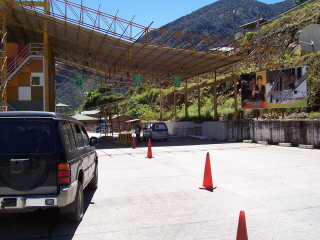 US-funded FELCN (Special Force for the Struggle Against Narcotics) checkpoint between Cochabamba and Chapare, search being conducted for cocaine and precursors
US-funded FELCN (Special Force for the Struggle Against Narcotics) checkpoint between Cochabamba and Chapare, search being conducted for cocaine and precursors
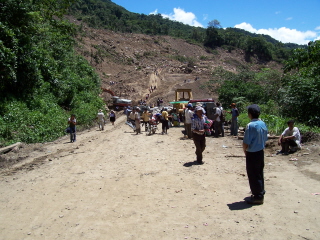 Site of major landslide produced by massive rainstorms. Buses and trucks by the dozens were backed up here. We had to leave the jeep on the near side, walk across the landslide, hire motorcyclists to carry us about a mile to where taxis were waiting, then hire a taxi for the afternoon in the Chapare.
Click the "read full post" link or here for 20 more pictures chronicling Phil's visit to the Chapare coca-growing region.
Site of major landslide produced by massive rainstorms. Buses and trucks by the dozens were backed up here. We had to leave the jeep on the near side, walk across the landslide, hire motorcyclists to carry us about a mile to where taxis were waiting, then hire a taxi for the afternoon in the Chapare.
Click the "read full post" link or here for 20 more pictures chronicling Phil's visit to the Chapare coca-growing region.
 People carrying their stuff along a mile-long trail above the landslide to get to buses on the other side. We cheated. My guide, Godofredo Reinecke, the former human rights ombudsman ("defensor del pueblo") in the Chapare, convinced soldiers I was a photojournalist, so we were able to walk along the washed out roadway; much shorter than the hike on the path, but very muddy.
People carrying their stuff along a mile-long trail above the landslide to get to buses on the other side. We cheated. My guide, Godofredo Reinecke, the former human rights ombudsman ("defensor del pueblo") in the Chapare, convinced soldiers I was a photojournalist, so we were able to walk along the washed out roadway; much shorter than the hike on the path, but very muddy.
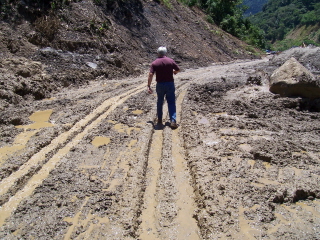 Godofredo in the lead
Godofredo in the lead
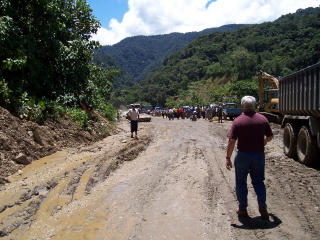 more Godofredo
more Godofredo
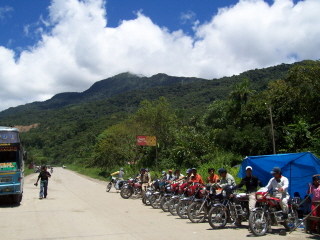 Motorcyclists for hire for hikers trying to get to cabs and buses further down the road
Motorcyclists for hire for hikers trying to get to cabs and buses further down the road
 coca leaves drying by side of highway
coca leaves drying by side of highway
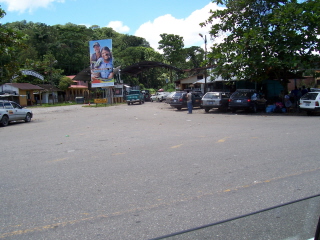 FELCN checkpoint, outside Villa Tunari
FELCN checkpoint, outside Villa Tunari
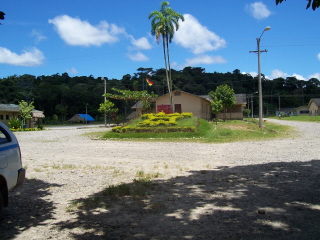 US-funded army base outside Villa Tunari
US-funded army base outside Villa Tunari
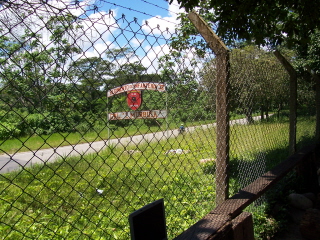 army base, inside looking out
army base, inside looking out
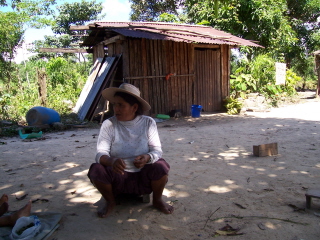 Six Federations coca growers' union member (and former leader) Vitalia Merida in her backyard. She says there is peace now in the Chapare, but no prosperity. Her kids don't want to go to school because they have no money; instead, they want to leave and work in the city.
Six Federations coca growers' union member (and former leader) Vitalia Merida in her backyard. She says there is peace now in the Chapare, but no prosperity. Her kids don't want to go to school because they have no money; instead, they want to leave and work in the city.
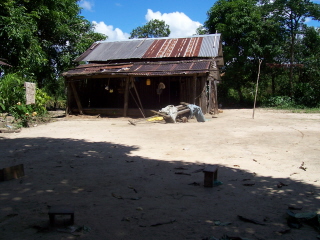 Vitalia's house -- no narco-palace, as the cocaleros like to point out
Vitalia's house -- no narco-palace, as the cocaleros like to point out
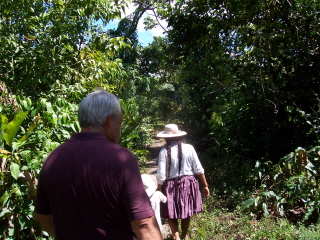 Walking to the coca patch. It was several miles from Vitalia's house, down a half-mile trail off a dirt road. The patch was hidden in the jungle to avoid detection during eradication times. Forced eradication is over, but the cocal doesn't move.
Walking to the coca patch. It was several miles from Vitalia's house, down a half-mile trail off a dirt road. The patch was hidden in the jungle to avoid detection during eradication times. Forced eradication is over, but the cocal doesn't move.
 Vitalia in her cocal. She will earn about $75 a month off coca leaves.
Vitalia in her cocal. She will earn about $75 a month off coca leaves.
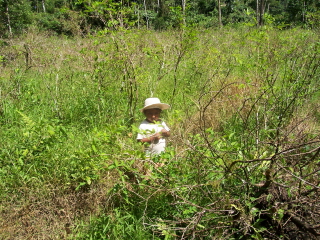 Vitalia's daughter
Vitalia's daughter
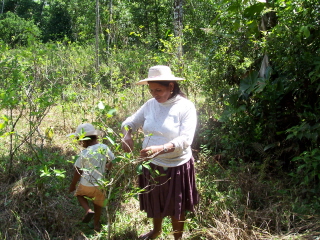 Vitalia and her daughter in the cocal
Vitalia and her daughter in the cocal
 The town of Shinahota, the Wild West of the Bolivian cocaine business during the "Cocaine Coup" years of the 1980s. Then, you bought cocaine, guns, and luxury goods downstairs, while prostitutes waited above. It's much quieter (and poorer) now.
The town of Shinahota, the Wild West of the Bolivian cocaine business during the "Cocaine Coup" years of the 1980s. Then, you bought cocaine, guns, and luxury goods downstairs, while prostitutes waited above. It's much quieter (and poorer) now.
 The coca leaf warehouse outside Shinahota. Here, local farmers bring their crops to be carefully weighed and sent on to legal markets within Bolivia. The entire process is controlled by the local growers' union.
The coca leaf warehouse outside Shinahota. Here, local farmers bring their crops to be carefully weighed and sent on to legal markets within Bolivia. The entire process is controlled by the local growers' union.
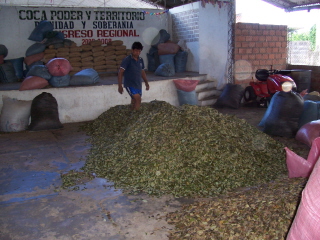 Drying the leaves in the warehouse. The sign reads "Coca Power and Territory, Dignity and Sovereignty, Regional Congress 2006-08"
Drying the leaves in the warehouse. The sign reads "Coca Power and Territory, Dignity and Sovereignty, Regional Congress 2006-08"
 sign announcing construction of coca leaf industrialization plant financed by Venezuela
sign announcing construction of coca leaf industrialization plant financed by Venezuela
 Plant under construction -- some of the coca product will go to Venezuela.
Plant under construction -- some of the coca product will go to Venezuela.
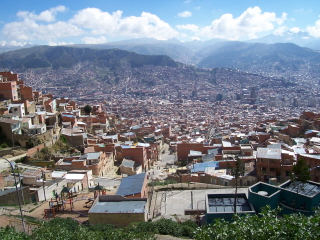 View of La Paz from El Alto, a lower-class suburb which is itself one of the world's highest cities.
View of La Paz from El Alto, a lower-class suburb which is itself one of the world's highest cities.This work by StoptheDrugWar.org is licensed under Creative Commons Attribution-ShareAlike 4.0 International
Add new comment